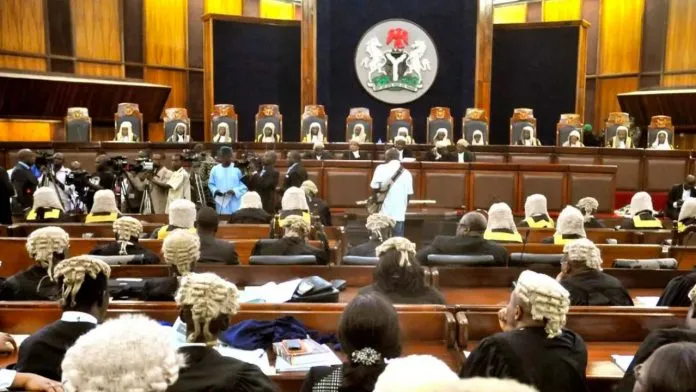The New Deal, a domestic programme of the administration of U.S. President Franklin D. Roosevelt between 1933 and 1939, took action to bring about immediate economic relief as well as reforms in industry, agriculture, finance, water, power, labour, and housing, thereby vastly increasing the scope of the federal government’s activities. The term was taken from Roosevelt’s speech while accepting the Democratic nomination for the presidency on July 2, 1932. Reacting to the ineffectiveness of the administration of President Herbert Hoover in meeting the ravages of the Great Depression, American voters, the following November overwhelmingly voted in favour of the Democratic promise of a “new deal” for the “forgotten man.” Opposed to the traditional American political philosophy of laissez-faire. The New Deal generally embraced the concept of a government-regulated economy aimed at achieving a balance between conflicting economic interests.
Much of the New Deal legislation was enacted within the first three months of Roosevelt’s presidency, which became known as the Hundred Days. The new administration’s first objective was to alleviate the suffering of the nation’s huge number of unemployed workers. Such agencies as the Works Progress Administration (WPA) and the Civilian Conservation Corps (CCC) were established to dispense emergency and short-term governmental aid and to provide temporary jobs, employment on construction projects, and youth work in the national forests. Before 1935 the New Deal focused on revitalizing the country’s stricken business and agricultural communities. To revive industrial activity, the National Recovery Administration (NRA) was granted authority to help shape industrial codes governing trade practices, wages, hours, child labour, and collective bargaining. The New Deal also tried to regulate the nation’s financial hierarchy in order to avoid a repetition of the stock market crash of 1929 and the massive bank failures that followed. The Federal Deposit Insurance Corporation (FDIC) granted government insurance for bank deposits in member banks of the Federal Reserve System, and the Securities and Exchange Commission (SEC) was formed to protect the investing public from fraudulent stock-market practices. The farm program was centred in the Agricultural Adjustment Administration (AAA), which attempted to raise prices by controlling the production of staple crops through cash subsidies to farmers. In addition, the arm of the federal government reached into the area of electric power, establishing in 1933 the Tennessee Valley Authority (TVA), which was to cover a seven-state area and supply cheap electricity, prevent floods, improve navigation, and produce nitrates.
In 1935 the New Deal emphasis shifted to measures designed to assist labour and other urban groups. The Wagner Act of 1935 greatly increased the authority of the federal government in industrial relations and strengthened the organizing power of labour unions, establishing the National Labor Relations Board (NLRB) to execute this program. To aid the “forgotten” homeowner, legislation was passed to refinance shaky mortgages and guarantee bank loans for both modernization and mortgage payments. Perhaps the most far-reaching programs of the entire New Deal were the Social Security measures enacted in 1935 and 1939, providing old-age and widows’ benefits, unemployment compensation, and disability insurance. Maximum work hours and minimum wages were also set in certain industries in 1938.
Certain New Deal laws were declared unconstitutional by the U.S. Supreme Court on the grounds that neither the commerce nor the taxing provisions of the Constitution granted the federal government authority to regulate industry or to undertake social and economic reform. Roosevelt, confident of the legality of all the measures, proposed early in 1937 a reorganization of the Court. This proposal met with vehement opposition and ultimate defeat, but the Court meanwhile ruled in favour of the remaining contested legislation. Despite resistance from business and other segments of the community to “socialistic” tendencies of the New Deal, many of its reforms gradually achieved national acceptance. Roosevelt’s domestic programs were largely followed in the Fair Deal of Pres. Harry S. Truman (1945–53), and both major U.S. parties came to accept most New Deal reforms as a permanent part of the national life.
A cursory look at the New Deal philosophy, especially the forces and situations that gave rise to it, brings to focus the Benue experience. It may not be to criticize but the truth tells an ugly situation about Benue. The State can hardly stand a competitive and comparative analysis with others created same time in Nigeria. Of course, every government of the state has made genuine commitment for the growth and development of the state. But what remains inexplicable is the defiant refusal of the state to adapt positive change and usher in a growing economy.
Like others, Governor Samuel Ortom seems to have come into leadership of the state with the mind to change the narrative, but somehow, the forces against him appear to be more suppressive than what can be imagined. Others have had similar fates in the governance of the State. Governor Ortom has touched areas that ordinarily one thinks would help improve the situation of the state. He has dissected the revenue generation sector with the hope of improvement and greater efficiency, he has delved in critical infrastructure like roads, school and health facilities, agriculture and many others, yet, it is more daunting than ever.
His situation is even more compounded by insecurity and criminality occasioned by herdsmen and bandits. The truth is that Benue is stunted in all spheres of development. But the people must not give up. There must be hope alive.
It therefore explains while it is important to take every move for 2023 governorship of Benue even more serious. The next person for Governor must be choosing from the crowd and must be the one who stand out tall in the midst of many.A good scholarly background and upbringing, integrity, personal accomplishments, leadership traits, achievements both in collective and individual pursuits and vision among other considerations.
It is along these lines, that the vision of one of the governorship aspirants, Dr Paul Tavershima Angya could be contemplated. He hails from Vandeikya Local Government Area of Benue State.
According to him, he has developed a vision borrowed from the former President of the United States of America. The vision, the NEW Deal, proposes to take on issues like, Public Works projects, financial reforms and regulations aimed at addressing social, economic and fiscal challenges of Benue State.
The vision, he said is a basic framework on how to achieve industrialization, particularly in Agriculture, youth development and Empowerment, women and gender development, business development and effective public – private partnership, health and health infrastructure, tourism and cultural development, socio-economic security and protection of human lives and properties, sports and infrastructural development and revenue generation.
This development model, without any iota of doubt may fit in the Benue situation and context. And it takes a committed, visionary and focused leader to make it work.
The truth about life is that visions are driven by passions and passions are inert feelings that refuse to die even in challenging circumstances.
The interest here is not to drum support for Dr Agya. It is to show the way to go on the politics this time – issues driven, war of ideas not guns and ballot snatching.
People should be ready to present clear tested ideas likened to the Benue State situation that would reverse this course of backwardness. Blames cannot change any situation but action borne out of a dissected situation.
The Voice Politics would welcome as much as possible ideas for positive change towards 2023 and make them open to Benue people for informed judgment.





